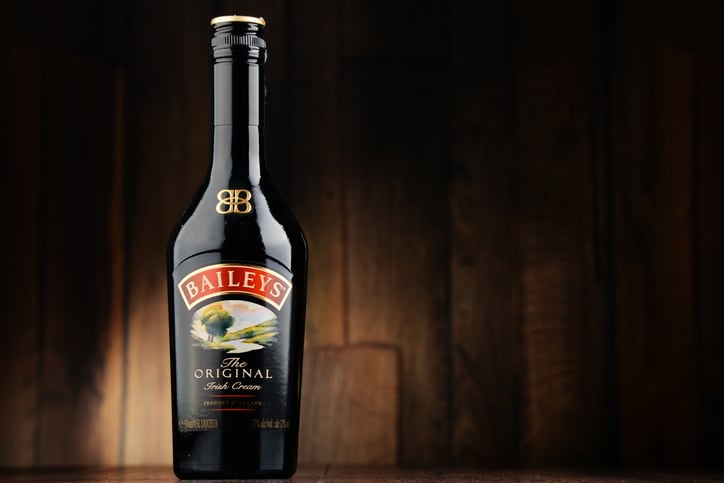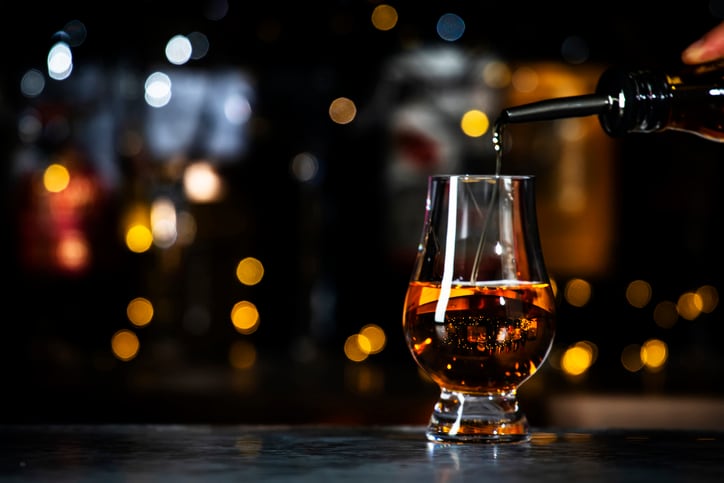Diageo has begun a formal search process for a new CEO, who will be tasked with driving the company forward after the last two turbulent years.
The London-headquartered spirits and beer giant announced earlier this month that Debra Crew would be stepping down with immediate effect: leaving Nik Jhangiani, CFO, as the interim CEO (meanwhile, 27-year Diageo veteran Deirdre Mahlan has just been appointed as interim CFO).
Debra Crew was appointed as CEO in June 2023. Crew had joined the company in 2019 and run the North American business until becoming chief operating officer in 2022. Prior to that, she headed up tobacco firm Reynolds American, with previous roles at PepsiCo and Nestle.
Crew’s appointment was rushed in with the sudden death of industry and company stalwart Sir Ivan Menezes, who ran the company from 2013 to 2023 having joined the company in 1997 (and Guinness before that).
But she inherited a company that faced several challenges.
Diageo, like all other beverage businesses, was still readjusting after the pandemic turmoil. Like other alcohol companies, it had seen a huge change in the way people consume alcohol. One of the top trends was how consumers were shifting consumption from the on-trade to the off-trade and trading up to more premium options: making cocktails at home during confinements and curfews.
Nowhere was this more exciting, thought Diageo, than in Latin America: where it pumped premium spirits stock into the market ready to make the most of this opportunity.
But Diageo became a victim of the so-called ‘COVID super-cycle’. Yes, it saw the Latin America and Caribbean region experience an ‘extraordinary period of growth’ from 2019 to 2022: with net sales value shooting up 50% over this period. Premium spirits were at the heart of this.
But the highs were followed by lows. Macro-economic slowdowns in these Latin American markets then saw consumers step back from the spirits category: downtrading to categories such as beer.
That left Diageo with large quantities of inventory shipped in the first half of fiscal 23: which ‘was not the right product and ultimately did not pull through to the consumer’, as the company later acknowledged.
Just a few months into the job, Crew and Diageo had to issue a profit warning in November. The high-profile Latin America debacle had already marked her tenure: but the problems went beyond that.
“Crew came in when conditions weren’t good and they just got worse,” said Verushka Shetty, equity analyst at Morningstar, who follows the company and its competitors closely. “She faced scrutiny with the Latin American issues, where they over-estimated premium spirits sales, then the economy got worse and there was more downtrading.
“But the big picture is that Latin America makes up around 10% of Diageo sales. A lot of the downturn stemmed from soft environments in North America and APAC.”
That’s where Diageo was much more exposed: North America making up 40% of its market. And in FY24, organic net sales in this market were down 2.5%: dragging down company sales alongside the 21% decline in Latin America and Caribbean (overall, company sales dropped 1.4% that year).
There’s numerous factors for this: consumers are tightening their belts, they’re increasingly thinking about moderating their alcohol intake, and they’re also looking at the increasing array of other drinks options on the market.
Diageo's woes
Diageo’s share price fell more than 43% since Crew took over in 2023.
But Diageo is not alone in the North American market or dealing with complex global shifts in markets and trends.
Pernod Ricard, Campari, Brown-Forman, Bacardi and others are all selling premium spirits in the same environment.
“Broadly, Diageo faces the same challenges as its competitors: with a post-COVID hangover and industry downturn over the last two years,” said Shetty. “So Diageo, Pernod Ricard, Campari have all been focusing on cost savings, cash generation and streamlining portfolios.”
And, despite all the turmoil, analysts remain surprisingly positive about the prospects for Diageo.
You’ve come a long way, Baileys
At the core of this is its strong portfolio: Guinness, Johnnie Walker, Tanqueray, Baileys, Smirnoff, Captain Morgan, Gordon’s, DeLeon, Don Julio, Crown Royal and more.
It’s a portfolio that has been built up over years and a strong set of brands have come a long, long way together.
Diageo was founded in 1997: although the brands themselves date back way further (right back to 1627 for Haig Club, which has since propelled itself into the modern mainstream with David Beckham as brand ambassador for more than a decade).
Diageo was formed through the merger of Grand Metropolitan and Guinness: bringing a host of mega brands (some neatly related, others – like Burger King – less so...) together in a new London-headquartered business.
Diageo's weapon of choice: a strong portfolio
Diageo's power portfolio includes:
Johnnie Walker
Guinness
Tanqueray
Baileys
Smirnoff
Captain Morgan
Don Julio
Ciroc Vodka
Gordon's
Ketal One
Astral Tequila
Bulleit Whiskey
Casamigos
Astral Tequila
Tanqueray
Aviation Gin
21 Seeds
Pimm's
Hop House Lager
Bundaberg Rum
Kilkenny
Talisker
Seagram's 7
It has a large portfolio of aging spirits: with the largest depository of Scotch (primarily Johnnie Walker) and aged tequila: all of which command strong premiums.
It also has Guinness: a brand that’s been booming and caused inventory issues (this time, not enough… illustrating once again the skill and challenges in navigating this terrain) in the UK.
Then there’s enduring popular drinks like Christmas-favorite Baileys (founded in 1974); British summertime classic Pimm’s; and innovative pioneers like Seedlip.

Geographically, its portfolio is well-spread between developed (North America, Europe, UK) and developing markets.
India and South East Asia are areas to watch: Africa, while coming off a small base, grew 12% in FY2024: thanks to beer and in particular brand Guinness.

Halfway between the gutter and the stars
Diageo’s story – while with some unique elements – simply illustrates the reality of today’s alcohol market.
As has always been the case, premium spirits (a focus for Diageo but also its competitors) are more cyclical than most other consumer staples, including beer. And volumes can suffer bigger swings in economic downturns.
Diageo has to navigate a difficult market: but it does so with a strong portfolio with runway for growth.
Then there’s also the complicated headache of understanding what today’s drinkers are doing: which is more complex and confusing than ever.
Does the oft-cited mantra of ‘drinking less, but better’, mean spirits companies should be concerned that consumers are drinking less (moderation being a key trend) or encouraged that they’re trading up (premiumization also being a key trend)?
Diageo: Through the hard times, and the good...
To date, Diageo has been good at following market data and consumer trends and reacting accordingly, says Shetty.
“I do think Diageo is good at capitalizing on trends: and with alcohol being so transient, not everything is going to be winners.
“Spirits are quite closely linked to economic cycles and history does repeat itself. We’ve seen this before – a downcycle in 2014 – and we did see a good recovery.”
Diageo’s next CEO will be hoping to push through the hard times and ride the wave of the good.
Right here, right now: Diageo FY2025
Diageo will report its FY25 preliminary results next week on August 5.


